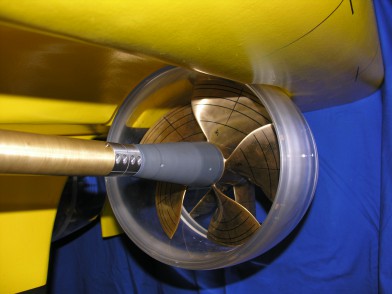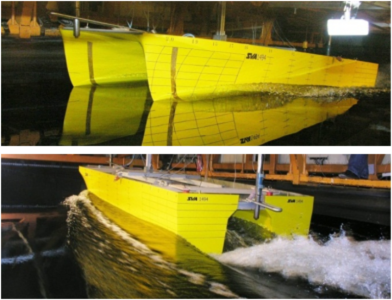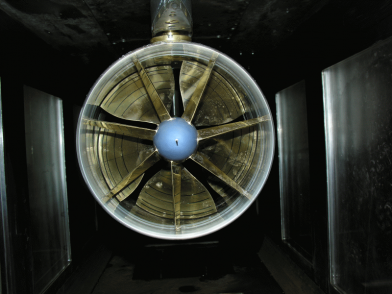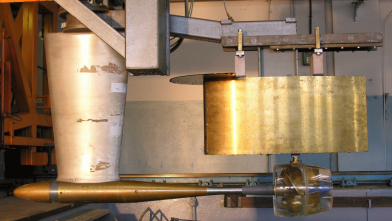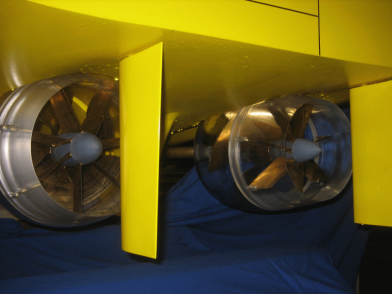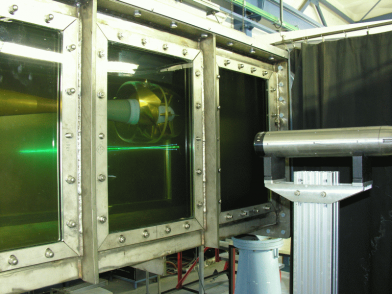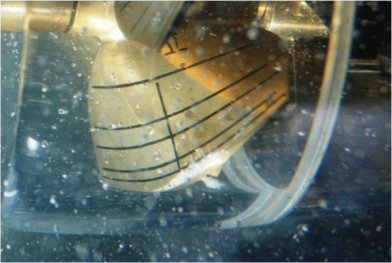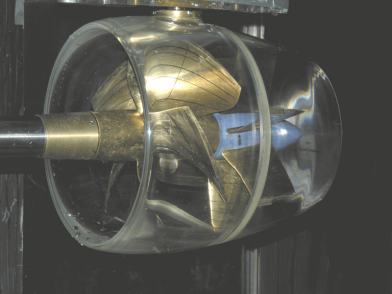The main components of the deep submerged water jets (DWJs) are rotor, stator and nozzle. The combination of the rotor and stator ensures a nearly swirl-free jet beam (minimum rotational loss). Through the nozzle geometry, the velocity and the pressure can be influenced within the linear jets (deceleration nozzle) in order to reduce the occurrence of cavitation.
The linear jet is located underneath the ship’s hull. Basic research in the R & D project “Development of Linear Jets for Yachts” [1] showed that the deep submerged water jet is a propulsion system with high efficiency and good cavitation characteristics and can be used, in particular, for fast ships and ships with draught restrictions. During the period from 2000-2005, studies and projects were conducted at the SVA for ships with deep submerged waterjets in collaboration with the industry and manufacturers of waterjets. At the end of 2005, Voith Turbo Schneider Propulsion GmbH & Co. KG [4] (VOITH) took over the development and production of the DWJs renaming them Voith Linear Jets (VLJ). Together with Voith, the R & D project “Development and Optimisation of Deeply Submerged Waterjets” (2006 – 2007) and “Propulsion of Ships with Deeply Submerged Waterjets” (2008 – 2010) were carried out in the SVA [2], [4]. The main goals were the optimisation of the submerged water jets, the determination of the open water characteristics and cavitation characteristics of DWJs, the hydrodynamic integration of DWJs in ship design, the development of the experimental methodology and predicting methods as well as identification of the propulsion characteristics of ships with DWJs. In 2012 VOITH received the first order for a twin set of Voith Linear jets (VLJ) from the British company Turbine Transfer Ltd. for a Wind Farm Support Vessel (WSV). In 2013 the VLJs were developed and manufactured by VOITH. At SVA, systematic experiments [3] and CFD calculations were performed referencing the full-scale measurements from the WSV to check the prediction methods.
The linear jet is located underneath the ship’s hull. Basic research in the R & D project “Development of Linear Jets for Yachts” [1] showed that the deep submerged water jet is a propulsion system with high efficiency and good cavitation characteristics and can be used, in particular, for fast ships and ships with draught restrictions. During the period from 2000-2005, studies and projects were conducted at the SVA for ships with deep submerged waterjets in collaboration with the industry and manufacturers of waterjets. At the end of 2005, Voith Turbo Schneider Propulsion GmbH & Co. KG [4] (VOITH) took over the development and production of the DWJs renaming them Voith Linear Jets (VLJ). Together with Voith, the R & D project “Development and Optimisation of Deeply Submerged Waterjets” (2006 – 2007) and “Propulsion of Ships with Deeply Submerged Waterjets” (2008 – 2010) were carried out in the SVA [2], [4]. The main goals were the optimisation of the submerged water jets, the determination of the open water characteristics and cavitation characteristics of DWJs, the hydrodynamic integration of DWJs in ship design, the development of the experimental methodology and predicting methods as well as identification of the propulsion characteristics of ships with DWJs. In 2012 VOITH received the first order for a twin set of Voith Linear jets (VLJ) from the British company Turbine Transfer Ltd. for a Wind Farm Support Vessel (WSV). In 2013 the VLJs were developed and manufactured by VOITH. At SVA, systematic experiments [3] and CFD calculations were performed referencing the full-scale measurements from the WSV to check the prediction methods.
Context Related References / Research Projects
[1] Bohm, M., Jürgens, D.: LINEAR-Jet: A propulsion system for fast ships, PRADS 1998, The Hague, The Netherlands
[2] Heinke, H.-J., Hellwig; K.: Tiefgetauchter Waterjet – Entwicklungsstand und Ausblick, Marineforum 12/2005
[3] Heinke, H.-J.: Latest Hydrodynamic Results of the Voith Linear Jet, 5th Symposium on Voith Schneider Technology 2014, Heidenheim
[4] Jürgens, D., Heinke, H.-J.: Untersuchung tiefgetauchter Waterjets, STG-Hauptversammlung, Hamburg, Jahrbuch der Schiffbautechnischen Gesellschaft, 100. Band, 2006
